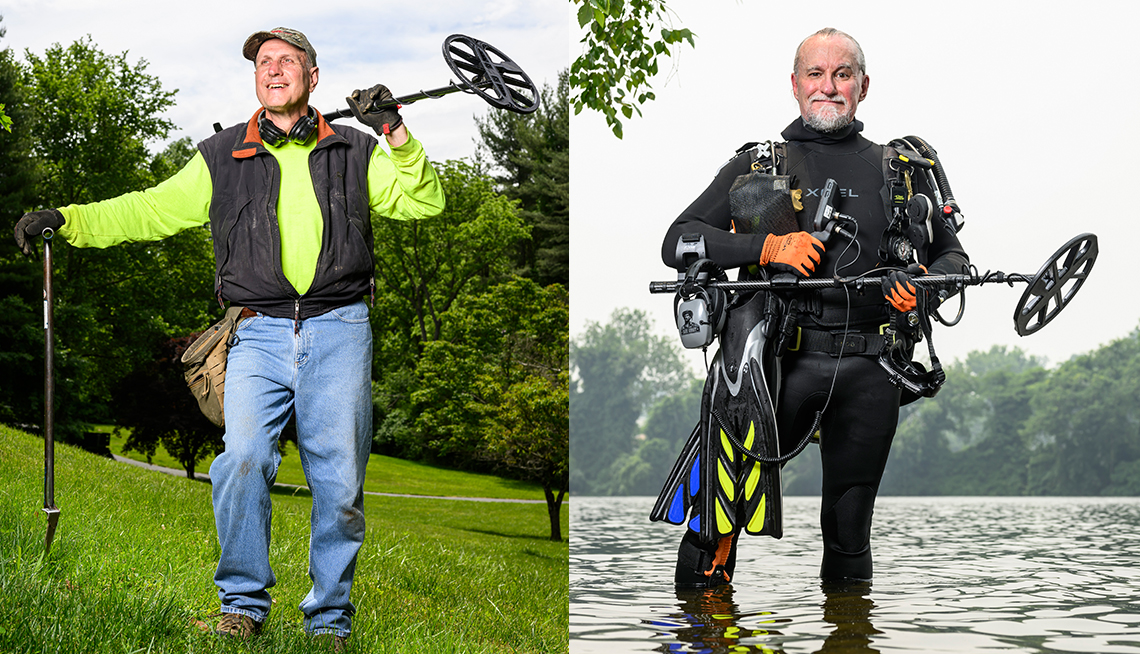Play all audios:
Some detectorists serve as volunteers for local law enforcement. In June 2021, members of an Ohio metal detecting club called the Dayton Diggers helped solve the mystery of who killed
22-year-old Joseph Kancy in front of his Lebanon, Ohio, home. Dayton Digger member Jared Shank of Beavercreek, Ohio, found a cell phone thrown into a ditch by Hemilio Castro, 20, of
Miamisburg, Ohio. Castro pled guilty the following April to involuntary manslaughter in Kancy’s death, according to WHIO TV. GEARING UP Most metal detectors look like a frying pan on the
end of a long pole. To find objects, you wave the round search coil that’s located at the end of the shaft over the ground. The coil radiates an electromagnetic field. If the magnetic field
encounters an anomaly underground, a signal is sent to the control box near the top of the shaft and a tone is emitted. Typically, the louder the tone, the greater the likelihood that
there’s something underneath the detector. The pitch of the tone can indicate the type of metal below ground. When you get a strong enough tone, you start digging. Metal detectors can
range in price from $100 to $5,000 or more. (Bill Wyman’s model costs about $160.) Some current models can distinguish between gold and iron and ignore aluminum can pop-tops, the bane of
detectorists. Most metal detectors can find objects 10 inches or so underground; others can sense as deeply as 18 inches, depending on the soil type. The hobby takes practice: Different soil
types can yield different tones, and more sophisticated detectors have several different modes for finding gold or silver or iron. Underground electric dog fences or power lines can easily
interfere with your detector. “There are so many variations; you never know what you’re going to run into,” says Ellis. Metal detecting requires a bit of research, too, says McCullough.
Not every vacant field is going to contain coins or cannonballs. “You’ll find better things if you have some idea of how the land was used in the past,” he says. One big help: Google Earth
allows you to overlay current maps with historic maps. Video: Hobbyist Got Into Metal Detecting for the Stories, Not Treasure You can also use metal detectors to find things underwater, says
Ellis, a certified scuba instructor. Typically, this requires a special type of detector, but there are some types of detectors that can work on land and in limited water depths. “I’ve been
getting a lot of calls lately,” Ellis says. “People keep dropping their iPhones in the Occoquan,” a popular recreational river in Northern Virginia. True underwater metal detectors, the
type used by shipwreck hunters, can cost $5,000 and more.

